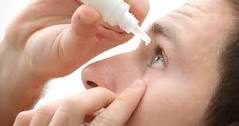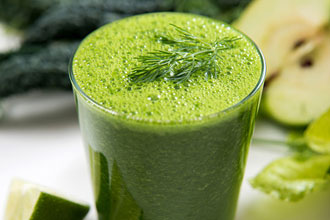
An incredible 1.6 billion people worldwide suffer from some form of nearsightedness (myopia), which can vary from being mild to severe.
Myopia is the world’s most common eyesight problem, but in the last two decades there has been a significant increase in the number of children being diagnosed with the condition.
Recent research suggests that a quarter of children now need glasses to correct blurred distance vision caused by myopia.
A study carried out has found that a lack of outdoor activity (less than 45 minutes a day) and a general increase in the amount of time (more than 2 hours a day) spent using near vision (video games, computers) can affect eye development in children.
Reducing the risk of myopia
There is a genetic link to the development of myopia, with those who have a familial history of the eye condition being more likely to suffer from it too.
For children who are predisposed to developing myopia, it was suggested that they spend at least 15 hours a week outside and minimize the amount of time doing long stints of activities that require near vision.
Simple changes, such as increasing the amount of time outdoors and limiting the use of liquid crystal monitors at close range (laptops, computer games etc) can help reduce the risk of developing myopia.


According to the Centers for Disease Control, there are nearly 800,000 work-related eye injuries each year. Every day, approximately 2,000 U.S. workers receive medical treatment for eye injuries related to or sustained at work. While vision loss is one of the 10 most common disabilities, 90 percent of eye injuries are preventable.


By Amy Hellem; reviewed by Gary Heiting, OD
Eye drops are used to treat a wide variety of conditions — from glaucoma and eye infections to allergies and dry eyes. In many cases, eye drops (or “eyedrops”) are essential to preserving your vision and protecting your eyes.
To get the greatest benefit from eye drops, you must use them properly. Whether you need one drop per day or 10, there’s a right way and a wrong way to put eye drops in your eyes.
Your eye doctor or pharmacist may give you instructions that are specific to the prescription eye drops you need. But in most cases, the proper technique for applying eye drops is the same, whether you are using prescription or over-the-counter formulas that you can purchase without a prescription.
Failing to learn how to correctly put drops in your eyes not only can defeat the purpose of having them, it also can get expensive. Each time you miss your eye and have to use more drops than you should, it costs you money — potentially a lot of money in the case of some prescription eye drops.
Step-By-Step Approach ToPutting In Eye Drops
- Wash your hands with soap and water; then dry them with a clean towel.
- If you are wearing contact lenses, remove them. The only exception is if you are using eye drops that are specifically formulated to remoisten your contacts or if your doctor advised you to use the drops in this manner.
- Remove the dropper cap and look closely at the tip to make sure it’s not cracked or otherwise damaged. Do not touch the tip.
- Either lie down or tilt your head back, and look up at the ceiling. Concentrate on a point on the ceiling, keeping your eye wide open.
- Place one or two fingers on your face about an inch below your eye; gently pull down to create a pocket between your lower eyelid and your eyeball.
- Use your other hand to hold the eye drop bottle, pointing the tip downward. Resting your hand on your forehead may help steady it.
- Hold the bottle close to your eye (about an inch away). Be careful not to let the dropper touch your eye or eyelashes, since this can introduce bacteria and other organisms into the eye drops in the bottle.
- Squeeze lightly to instill one drop inside your lower lid.
- Remove your hands from your face, gently close your eyes and tilt your head down for a few seconds. Try not to blink, as this can force some of the drop out of your eye before it has had a chance to be absorbed.
Knowing how to apply eye drops properly will save you time, aggravation and, especially in the case of prescription drops, quite a bit of money.
- To keep as much of the drop on your eye as possible, press lightly on the inner corner of your eyelid, next to your nose. A small duct that drains tears away from your eye and into your nose is located here. By pressing at this point, you close down the opening of this drainage duct, allowing the eye drop to remain on the surface of your eye longer.
This technique also minimizes the funny taste you may get in your mouth after applying certain eye drops.
- Use a clean tissue to absorb and wipe away any drops that spill out of your eye and onto your eyelids and face.
- If you are using eye drops on both eyes, repeat this procedure for the second eye.
- Replace the cap of the bottle and screw it on securely. Never wipe the dropper tip with anything, as this may contaminate the drops.
- Wash your hands to clean away any stray eye drops.
What ToDo If You Need To Use More Than One Eye Drop
Sometimes, you may be prescribed more than one type of medicated eye drop. But if you apply the drops too quickly in succession, they may drip out of the eye and not be absorbed properly, reducing the therapeutic effect.
If you need to put a second eye drop in the same eye, wait at least five minutes. This will give time for the first drop to be fully absorbed and create more space for the second drop on the eye.
If you use both a medicated eye drop and a lubricating eye drop on the same eye, many doctors prefer that you start with the prescription (medicinal) eye drop first and save over-the-counter products, such as artificial tears, for later.
Practice With Artificial Tears
If you aren’t comfortable putting drops in your eyes, a little practice can help you master the task quickly.
Purchase a package of preservative-free artificial tears to use for practice. (Don’t practice with prescription eye drops — you don’t want to risk over-medicating.) Using a preservative-free formula eliminates the risk of you being allergic to preservatives found in many artificial tears. Also, choose a product formulated for mild dry eyes — these drops aren’t as thick as those made for moderate or severe dry eyes, so they won’t cause any temporary blurred vision.
Ask a friend to coach you while you are practicing. In particular, have them help you position the applicator at the proper distance and location above your eye so the drops fall directly on the surface of your eye or in the space between your eye and your pulled-down lower lid.
In less time than you might think, you will become a pro at applying eye drops. Also, it’s a good idea to keep a supply of preservative-free artificial tears on hand. These drops can help relieve discomfort associated with computer eye strain and are soothing at other times when your eyes are tired or dry.

Chilled soup sipper or juice? This versatile recipe by chef Anna Olson can work both ways.
The green peas are full of vitamin C, with a significant amount of vitamin A as well. The apples and leafy greens contain other important nutrients for eyes.
The mint is a good source of several antioxidants. And the Greek yogurt offers a beneficial dose of protein.
(makes about 6 cups)
1 English cucumber
2 Granny Smith apples
1 lime, peeled
4 cups loosely packed spinach leaves
4 cups loosely packed baby kale
2 cups fresh or thawed frozen peas
2/3 cup loosely packed mint leaves
1-1/2 cups plain Greek yogurt
honey, to taste
lightly toasted sliced almonds, as garnish
- Wash all of the vegetables and fruits thoroughly. Cut the cucumber and apple into large pieces.
- Push all of the ingredients except the yogurt, honey and almonds through a juicer.
- Whisk the juice into the Greek yogurt and add the honey to taste.
- Pour into bowl or little glasses for sipping, and top with the toasted almonds


Are there foods that promote healthy eyes? There certainly are. There are a number of foods that can help protect your eyes and reduce your risk of serious eye conditions. The doctors at Heritage Eye, Skin & Laser Center in Stockton are dedicated to providing the best eye care in Stockton and they recommend a healthy diet with plenty of fruits and vegetables to help keep your eyes healthy. In fact, we often see Dr. Miselis, Board Certified Ophthalmologist, Medical Director and Surgeon for Heritage Eye, Skin & Laser Center, eating his favorite salad for lunch – loaded with an assortment of dark leafy greens, plus a variety of seeds and berries.
If you want to help your eyes stay as healthy as possible, here’s a list of foods that are great for your eyes and worth incorporating into your family meal planning.
Zucchini
Zucchini is rich in lutein and zeaxanthin, which help protect the central retina from damage caused by the sun’s ultraviolet (UV) rays and high-energy visible (HEV) light. Prolonged exposure to UV and HEV rays may damage the retina and increase your risk of developing macular degeneration. Some research suggests lutein and zeaxanthin may reduce the risk of cataracts later in life.
Broccoli
Broccoli and broccoli sprouts have been found to protect the retina from free radical damage. This may be due to a compound in broccoli called sulforaphane which naturally boosts the body’s own defense system against free radicals.
Eggs
Eggs are rich in cysteine and sulphur, two components of glutathione, a protein that acts as an antioxidant for the lens of the eye. This may explain why sulphur-containing compounds have been found to protect from cataract formation. Egg yolks also contain lutein and diets high in lutein can help to reduce the risk of developing age-related macular degeneration.
Garlic and Onions
Sulphur-rich garlic and onions are important for the production of glutathione, an important sulphur containing protein that acts as an antioxidant for the lens of the eye. Raising glutathione levels can be instrumental in both prevention and resolution of visual problems like macular degeneration, glaucoma or cataracts.
Tomatoes
Tomatoes contain two eye-healthy nutrients — lycopene and lutein. Both of these phytochemicals are carotenoids, found to be helpful for vision. Lycopene has been well documented as effective in cancer-protection, but its antioxidant capabilities also act to protect the eyes from sun damage.
Carrots
The old axiom that carrots are good for the eyes is not just a myth. Carrots are rich in beta carotene (precursor to vitamin A, a necessary nutrient for vision), lycopene (a phytonutrient antioxidant protective of UVB radiation in the eye) and lutein (a protective phytonutrient found in high concentrations in the macula which protects it from free-radical damage).
Blueberries
In addition to having the eye-healthy carotenoids lutein and zeaxanthin, blueberries contain anthocyanins, eye-nourishing phytonutrients which have been shown to improve night vision. They also contain flavonoids like rutin, resveratrol and quercetin which may help to prevent macular degeneration. Blueberries also contain minerals necessary for proper vision and are associated with reducing eye fatigue
Apricots
Apricots are rich in both beta-carotene and lycopene, two phytochemicals that promote good vision. Beta-carotene is converted by the body to vitamin A, an important antioxidant that resists oxidative stress damage to the lens of the eye, helping to prevent cataracts and macular degeneration.
Fatty Fish
Cold-water fish such as salmon, tuna, cod, haddock as well as sardines are rich in the healthy Omega-3 oils. Fish are especially high in EPA and DHA, two Omega-3 fats which are important for cellular health. DHA makes up 30 percent of the fatty acids that comprise the retina. Low levels of DHA have been linked to dry eye syndrome.
Leafy Greens, Fruits and Berries
They’re packed with vitamin C, lutein and zeaxanthin—antioxidants that, studies show, lower the risk of developing macular degeneration and cataracts.
Sources: www.aoa.org/patients-and-public/caring-for-your-vision/diet-and-nutrition/lutein?sso=y
www.ncbi.nlm.nih.gov/pubmed/16210721



